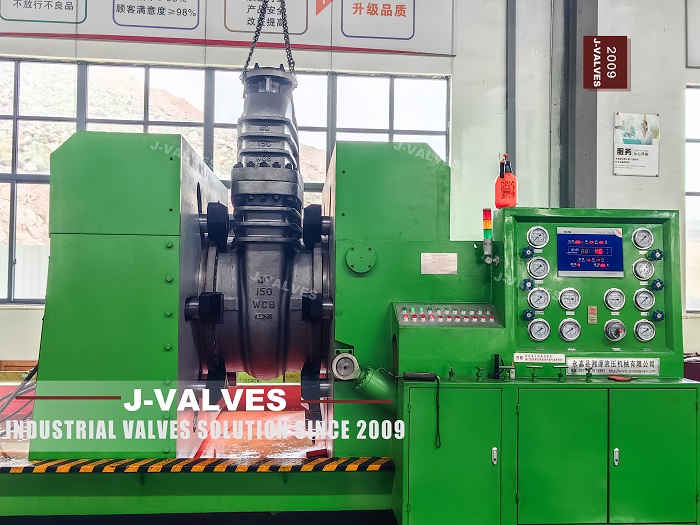Views: 0 Author: J-VALVES Publish Time: 2025-09-12 Origin: Site









Gate valves are designed to provide full or partial flow control in pipelines, and their proper operation is critical for preventing leaks, ensuring efficient fluid flow, and maintaining system pressure. Comprehensive testing helps identify potential issues before they lead to costly repairs or system failures. It also ensures that the valve meets industry standards and safety requirements.
Key Steps for Comprehensive Testing on Gate Valves
I. Visual Inspection
Purpose: To identify any visible signs of damage, wear, or corrosion.
Procedure:
Exterior Check: Examine the valve body, bonnet, stem, and other external components for cracks, corrosion, or other visible damage.
Interior Check: If possible, inspect the interior components, including the gate, seat, and stem, for signs of wear or damage. This may require disassembly of the valve.
II. Pressure Testing
Purpose: To verify the valves ability to withstand operating pressures without leaks.
Procedure:
Hydrostatic Testing: Fill the valve with water and pressurize it to 1.5 times the maximum allowable working pressure (MAWP) for a specified period (usually 15-30 minutes). Check for any leaks or signs of deformation.
Pneumatic Testing: For applications where hydrostatic testing is not feasible, use air or inert gas to pressurize the valve to 1.1 times the MAWP. Ensure all connections and seals are leak-free.

III. Flow Testing
Purpose: To evaluate the valves flow characteristics and ensure proper flow control.
Procedure:
Full-Open Flow Test: Open the valve fully and measure the flow rate to ensure it meets the specified flow capacity.
Partial-Open Flow Test: Adjust the valve to various intermediate positions and measure the flow rate to verify the valves ability to control flow accurately.
IV. Seat and Seal Testing
Purpose: To ensure the valves seats and seals are intact and provide a tight shutoff.
Procedure:
Leakage Testing: Close the valve and apply a differential pressure across the valve. Use a leak detection solution or ultrasonic leak detection equipment to check for any signs of leakage around the seats and seals.
Seat Integrity Check: Inspect the seats for any signs of wear, damage, or corrosion. Replace any damaged seats to ensure a tight shutoff.
V. Actuation Testing
Purpose: To verify the valves actuation mechanism operates smoothly and reliably.
Procedure:
Manual Operation: If the valve is manually operated, cycle the valve several times to ensure smooth operation of the handwheel or lever.
Automated Actuation: For electric, pneumatic, or hydraulic actuators, perform a series of open and close cycles to ensure the actuator operates correctly and responds to control signals accurately.
VI. Temperature Testing
Purpose: To ensure the valve can operate reliably under the expected temperature conditions.
Procedure:
High-Temperature Testing: Expose the valve to the maximum operating temperature and perform a series of tests to verify its performance and integrity.
Low-Temperature Testing: Similarly, expose the valve to the minimum operating temperature and test its functionality to ensure it operates correctly in cold conditions.
VII. Cycle Testing
Purpose: To evaluate the valves durability and performance over multiple operating cycles.
Procedure:
Repeated Cycling: Perform a series of open and close cycles (typically 100-500 cycles) to simulate long-term use and identify any potential issues with wear or fatigue.
Performance Monitoring: Monitor the valves performance during cycling, including flow rates, pressure drops, and actuation response times.
Conclusion
Performing comprehensive testing on gate valves is essential for ensuring their reliability, safety, and efficiency in industrial applications. By following the outlined steps, you can thoroughly evaluate the performance and integrity of gate valves, identify potential issues, and take corrective actions before they lead to system failures. Regular and thorough testing not only prolongs the valves lifespan but also helps maintain overall system performance and safety.